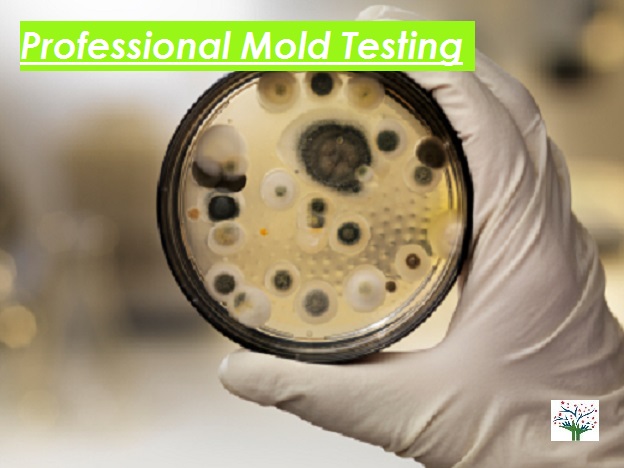Enhance Your Safety Protocols with Expert Mycotoxin testing Services
Wiki Article
Why Mycotoxin Testing Services Are Essential for Protecting Public Health
The relevance of mycotoxin screening services in guarding public wellness can not be overemphasized. Mycotoxins, poisonous substances produced by fungis, present major wellness risks such as liver damages and cancer cells when existing in food and feed.Recognizing Mycotoxins
Comprehending mycotoxins is crucial for making certain food safety and security and shielding public wellness. Mycotoxins are hazardous compounds produced by certain types of fungi, generally located in food and feed crops.The existence of mycotoxins in foods items can endanger their safety and quality. They are resistant to traditional food processing strategies, thereby continuing the food supply chain and posturing prospective threats. Regulative bodies worldwide, such as the Food and Farming Organization (FAO) and the Globe Health Company (WHO), have actually set rigid limits on appropriate degrees of mycotoxins in food items to reduce their adverse impacts.
Effective mycotoxin management includes comprehensive tracking and testing to spot and measure their degrees in farming products. This aggressive approach assists in determining polluted batches early, therefore avoiding their introduction into the market. Implementing rigorous mycotoxin controls is vital for preserving food safety and security standards and securing customer health.
Health Dangers of Mycotoxins

Exposure to mycotoxins postures significant wellness risks to both human beings and animals, necessitating watchful surveillance and control measures. In people, mycotoxins such as aflatoxins, ochratoxins, and fumonisins can trigger an array of unfavorable impacts, consisting of liver damage, kidney toxicity, immune reductions, and also carcinogenic impacts.

Offered these serious wellness repercussions, it is important to apply robust mycotoxin screening protocols. Precise discovery and quantification of mycotoxins in food and feed are important to alleviate health risks and ensure public and animal safety.
Typical Sources of Contamination

Along with grains, nuts such as almonds, pistachios, and peanuts are extremely prone to mycotoxin contamination. Aflatoxins, a powerful kind of mycotoxin, are frequently found in these nuts, especially when storage conditions are suboptimal. Dried out fruits, including raisins, apricots, and figs, additionally present abundant premises for fungal growth as a result of their high sugar content and moisture-retaining properties.
Moreover, contamination is not restricted to raw agricultural products. Refined foods, animal feeds, and dairy items can also include mycotoxins if the first ingredients were infected. This extends the danger of direct exposure throughout the food supply chain, necessitating strict surveillance and control measures.
Comprehending the usual sources of mycotoxin contamination is important for applying efficient preventative approaches. Reducing these dangers at the source can considerably lower the incidence of mycotoxin-related health and my site wellness problems, safeguarding public health.
Examining Methods and methods
Advanced logical techniques are used to identify and measure mycotoxins in read this article various substratums, making certain public wellness safety and security. High-Performance Liquid Chromatography (HPLC) paired with mass spectrometry (MS) is a gold requirement in mycotoxin screening, delivering high sensitivity and uniqueness.An additional widely made use of technique is Enzyme-Linked Immunosorbent Assay (ELISA), which supplies quick screening and is affordable for large example volumes - Mycotoxin testing Services. ELISA kits are useful because of their ease of use and fast turnaround time, making them ideal for on-site testing
Sampling methods are equally crucial. Proper tasting ensures that the accumulated specimens are depictive of the entire set, thus minimizing the threat of false downsides or positives. Adherence to established standards, such as those offered by the International Company for Standardization (ISO) and the European Committee for Standardization (CEN), is essential for preserving consistency and dependability across screening practices.
Strenuous validation of these protocols and techniques is crucial. It guarantees reproducibility and accuracy, therefore fortifying the integrity of mycotoxin administration systems.

Advantages of Routine Testing
In the world of food security and agricultural quality assurance, the benefits of normal mycotoxin screening can not be overstated. Regular testing ensures that farming products fulfill security standards, consequently safeguarding customers from the dangerous effects of mycotoxins, which consist of liver damage, immune reductions, and even cancer cells. By identifying polluted batches early, routine screening enables for prompt intervention, stopping such products from discover this going into the food chain.Additionally, regular mycotoxin testing is crucial for maintaining the integrity and track record of food producers and vendors. Business that dedicate to normal screening show their devotion to public health and food safety and security, therefore getting consumer depend on and loyalty. This proactive method can likewise alleviate economic losses related to item remembers, legal obligations, and possible trade restrictions.
Regular mycotoxin screening makes certain adherence to international and national guidelines, facilitating smooth trade operations and market access. Inevitably, normal mycotoxin screening not just shields public wellness yet likewise fortifies the economic stability and global competitiveness of the agricultural sector.
Conclusion
Mycotoxin testing solutions play an essential role in public health defense by recognizing and mitigating the risks presented by hazardous fungal substances in food and feed. By finding contamination early, these services prevent serious wellness issues such as liver damages and cancer, ensuring conformity with regulative standards. Normal testing enhances customer count on, supports the honesty of the farming industry, and ultimately adds to the securing of food safety and public wellness.The importance of mycotoxin screening services in safeguarding public health and wellness can not be overstated.Recognizing mycotoxins is critical for guaranteeing food safety and securing public health. Mycotoxin testing Services. Regulative bodies worldwide, such as the Food and Farming Company (FAO) and the World Wellness Organization (THAT), have actually set rigid limits on acceptable levels of mycotoxins in food items to alleviate their negative results
Eventually, normal mycotoxin screening not only safeguards public health and wellness yet likewise fortifies the financial stability and international competition of the agricultural field.
Mycotoxin testing solutions play a vital duty in public health security by determining and minimizing the risks positioned by hazardous fungal substances in food and feed.
Report this wiki page